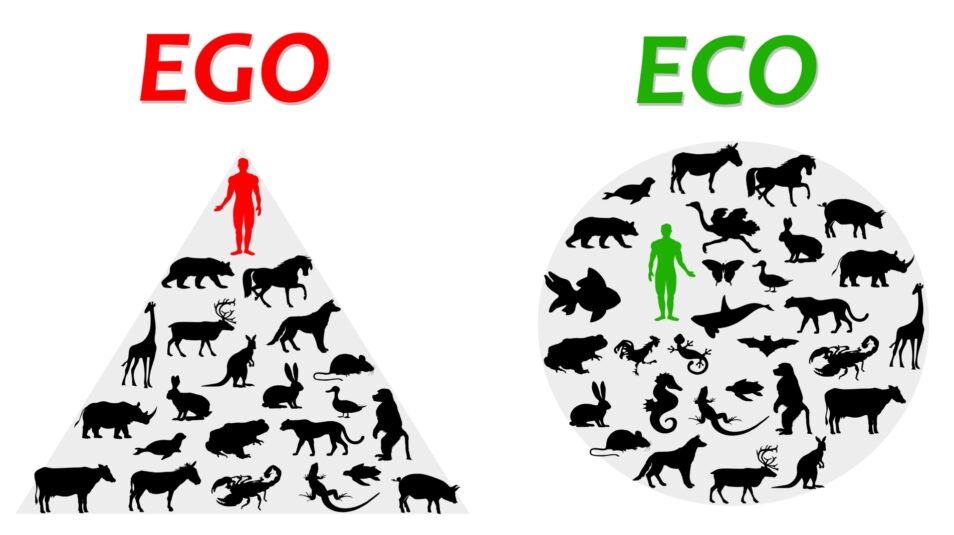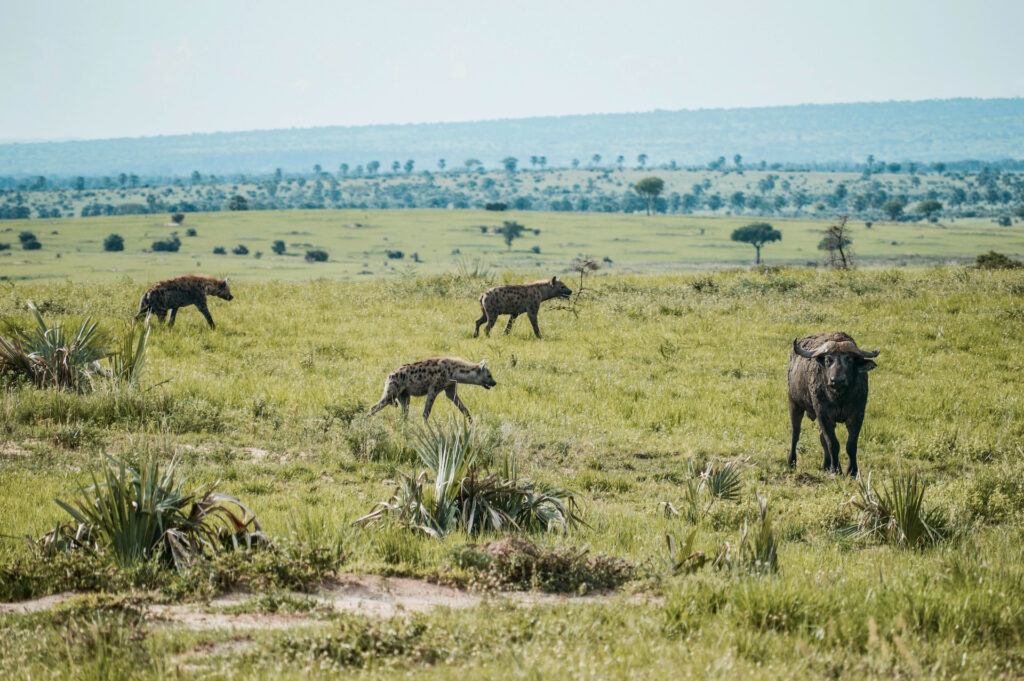WHAT IS YOUR OPINION? Let us know in the comment section below

“It is our collective and individual responsibility to protect and nurture the global family, to support its weaker members and to preserve and tend to the environment in which we all live.”
— Dalai Lama
Religion and the environmental crisis
3.1 Pacifism (laissez faire)
3.2 Technology
3.3 Geo-engineering
3.4 Biomimicry – design with Nature
3.5 Education as a solution
5.1 Main religions attitude towards Nature
5.2 Critique of theological approach

“When we know how to protect all beings, we are protecting ourselves.”
— Thích Nhất Hạnh

If you can’t be in awe of Nature, there’s something wrong with you.” —Alex Trebek
Arguably the overwhelming issue dominating the media currently is that of environmental catastrophes – floods, drought, raging regional veldt fires, drying up or large rivers – generally assigned to be the result of global warming. This signals an environmental crisis of unprecedented magnitude. Statements such as: “Humanity stands at a most precipitous moment in our planet’s history despite our supposedly superior intelligence and elated belief that we are the “crown of creation” who can solve all problems” is commonplace. The result is not only human tragedies but also environmental degradation that further negatively impact on the environments’ balance and capacity to supply necessary ecosystem services (resources such as clean water, air, soil, vegetation) to humankind. We are already extracting more resources than what can be replenished by nature, andare degrading the productive quality of that which is left by inappropriate means of development.
Without pre-empting the solution by way of an oversimplification of the real problem, one could say that people must return, or adapt in a sensible way, to a lifestyle in accordance with the earth’s resource capacity; be it through simplistic living and/or sensible technology. More easily said than done!
It is not as if we did not, for a long time, know it was coming. It was in 1949 that Aldo Leopold and Rachel Carson (1962) tried their best to warn us by way of scientific publications but most of humankind was however still riding on the crest of the wave of prosperity to “subdue and reign”; to extract as much as possible, as quickly as possible, under the pretence of the laudable banner of “development”. The Club of Rome (Meadows, 1972) predicted that the Earth’s resources would not be able to supply the demand further than the 21st century.
It was however not until the 1990’s that we really started to realize that something has to be done – drastically. In 1992 the world accepted the “Agenda 21” in the Rio Agenda to path the way forward towards sustainable living for the world.A decade later in 2002 the World Summit had to tell the people of the world that the majority of people are still desperately poor (25 000 dying daily of hunger), and the degradation of the environment has increased; not improved.
After yet another decade, in 2012 the Sustainable Development Goals (SDG’s) were accepted bythe United Nations. Another 10 years later there still seem little interest in fundamental change. In August 2021 the UN report issued a Code Red warning that we are entering a non-return crisis. A recent study (June 2023, 30 years after Rio) based on software from more than 70,000 different simulations,points to large ecosystem collapse that could happen as soon as in the next decade; i.e. 2030! When environmental stresses can no longer be absorbed, the ecosystem is passing a point of no return — the tipping point — and is collapsing.

Climate Code Red: The Case for Emergency Action is a 2008 book which presents scientific evidence of the climate crisis. It draws heavily on the work of James E. Hansen.

There are at the one extreme those who reckon that nothing at all should be done, and that Nature should continue to exist with no attempt being made to find a dynamic condition of equilibrium between people and Nature – even if it were to mean that the human race as a species was to disappear. But this will not destroy the planet, though. A million years after the human race becomes extinct, you’ll barely notice we were ever here. This we cannot accept lying down….or shall we?
“The greatest threat to our planet is the belief that someone else will save it.” —Robert Swan
The alternative extreme is that of going the technological way. Humans developed from slash-burn survival mode centuries ago, living in harmony with the environment, and then, via agricultural, and industrial revolutions into (and past) the electronic driven transformation. We overcame all environmental problems up to now. Is there then no validity in the faith that we can override Natures’ limitations and directives by sheer intelligence?
In 1955 the editors of FORTUNE issued a publication entitled “The fabulous Future”. The whole spirit of this work is reflected in the statement, “There is no longer any margin of doubt that whatever the minds of people visualize, the genius of science can turn into functioning fact.” (Southwick, 1972:51). Carnegie, the American industrialist, published a work with the suggestive title, “Gospel of Wealth”, in which he proclaimed, “… if we obey the laws of industrial [1] progress, we shall be promised a new life on Earth in which poverty, suppression and exploitation will disappear” (Carnegie, 1889). He clearly did not take cognisance of the basic human inclination of selfishness and greed, as well as a limited global resource base.
Our “spaceship” situation implies that the earth has just “so much” resources – nothing more. Reality shows us clearly that Carnegie’s expectations have not happened ……..up to now.
[1]Note: NOT Nature’s laws!

“The fact is that no species has ever had such wholesale control over everything on earth, living or dead, as we now have. That lays upon us, whether we like it or not, an awesome responsibility. In our hands now lies not only our own future, but that of all other living creatures with whom we share the earth.”

A true conservationist is a man who knows that the world is not given by his fathers but borrowed from his children.”
John James Audubon
Due to technological developments such as “fracking”, expansion of coal mining, nuclear plants, space travelling, and other serious sweeping methods, there have been astounding developments towards addressing the looming crisis. But there is also a strong drive towards enviro-friendly technology that is in balance with Nature. Examples include green hydrogen, geothermal energy extraction from the earth’s mantle, massive wind and solar farms, and many other initiatives.
Nevertheless, there are scientists who warn that technology’s outcome is unpredictable. Humans e.g. created a completely new simplified monocultural agricultural system with massive production capacity, under the laudable credo of development to feed the masses. This system is however kept artificially in balance by extra input (water, fertilizers, energy) above of what is normally available in nature.
Will humans, through technological infusion into the resource production line, ever be able to create an artificial balanced system, replicating the natural system? If we kill all the bees with insecticides, will we e.g. replace their role and other pollinators effectively? After clearing most of the forests, can we replace the CO2 extraction from the air by plants through technology?
Will we be able to continually improve artificially on this techno-driven system towards an ever-increasing human population’s need for food and wellbeing within an earth with limited resources? Will humankind be able to match the biosphere’s ecological intelligence? At a point of no return mankind might realize that he has replaced most of the biodiversity and the ecosystem services and might not be able to go back and re-create again natural processes. Dare we venture on such a high-risk path not knowing what the unforeseen implications according to the principle of “trigger factors” might be? (Hugo & Hugo, 2023). The Chaos theory warns us that we cannot predict the ripple effect of our actions. Is the high-risk technology to be the desperate “last throw of the dice” for survival. Can we improve on Nature and arrive at a higher level of sustainable living that Nature intends?
Truly scary questions?

By designing the front-end of the bullet train to resemble the shape of the kingfisher’s beak – not only did this help to reduce noise and eliminate tunnel booms, it also allowed the train to travel 10% faster using 15% less electricity.
Following on this, there is the conviction that we must develop technology, but within the guidelines of “design with Nature”(already propagated in 1969 by Ian McHarg). Natural ecosystems have developed a balance over a long period of time and are sustainable. They are systems that are productive, responsive to pests, and retentive of natural nutrients. Thus, they are appropriate models on which to base the design of land use systems. (Janine Benyus). It is a challenge to truly understand the functioning of Nature; not only on the intellectual level, but also to be capable to apply it by “playing the long game” vs the “quick fix approach” for maximizing gain.
The approach is appropriately named biomimicry – mimicking nature.

Its long streamlined beak makes the Kingfisher a master preditor. They sit still on a perch while watching for movement in th water below. To catch their unsuspecting prey they will slice through the air into the water and kill it with their dagger-shaped beak.
The concept of biomimicry has fundamental impact on sustainable land use. The study of biomimicry has propelled countless innovations, showing that nature remains an unparalleled source of engineering brilliance. The efficiency and adaptability of biologicalsystems are evident in many examples, from the complex structure of a spider’s web to the aerodynamics of bird flight and how the structure of butterfly wings can assist technology in regulating room temperature.
Whilst geoengineering strives to develop technology that do not hurt the environment, biomimicry attempts to learnpro-actively from Nature how to manage development.
As the Bible (Job 12v7) says… …
“..ask the animals, and they will teach you,
or the birds in the sky, and they will tell you;
or speak to the earth, and it will teach you,
or let the fish in the sea inform you”.

To be truely sustainable our perception of the environment need to shift from the ‘ruler’ mentality to a fellow-creature mentality.
There is a strong belief that humanism will solve the problem. People must be educated, well-informed and thus motivated to change their attitude toward fellow humans and nature. It is however wishful thinking to expect modern, egocentric, materialistic (self-loving) people (politicians, industrialists, and others that are the prime decisionmakers) to be persuaded by means of educational programmes, to make less profit, or to live less comfortably for the sake of others and ecological principles. (To change people from being ego-centric to eco-centric!). Don Pinnock laments that “..the sad truth is, “most humans don’t give a damn about nature”. Therefore, speculating on technological, ecological, or humanistic steps towards solving the environmental crisis has limited value. No blueprint such as the Sustainable Development Goals (SDGs) with detailed instructions will ever bring about a solution unless people’s disposition change.
If one looks deeper than the superficial concepts for the reasons for the crisis, which are normally provided by “the people who know”, we need to think again.
Technology and industrial development are not the reasons for the crisis but the result of people’s decisions. The results can never be the at the same timethe solution. To assess the deep-seated reason for our livelihood exceeding Natures capacity to provide, one must agree that the problem is that humans are by-and-large self-centred, driven by a crave for comfortable (if not outright luxury) living; even if harming fellow humans and exceeding Nature’s provision levels. It shows a lack of love and respect for co-beings and for Nature. In Mahatma Ghandhi’s words: “The earth has enough resources for people’s needs, but not for their greed”.Echoed by Mother Teresa: “We need to live more simply, so that others can simply live.”
To understand why and how people make decisions that have a profound effect on the world, is indeed important for our survival. Carter (1968:538) writes that “… culturally determined psychology of the individual determines his feeling towards his environment”.
Although humans can, and do, manipulate ecosystems, they ultimately remain fundamentally part of the biosphere and subject to nature’s laws. Although we cannot free ourselves from the directives and limitations of natural laws, we can manipulate Nature. As a result of the unique place which people occupy in the environment as the so-called “ecological dominant” with their “power of invention”, it is extremely important to study their decision-making processes.
Whereas all non-human elements are subject to natural laws whose reactions are predictable, the interactions between humans and their environment are much more complex. There is no simple cause and effect relationship between humans and natural elements. People are not merely omnivorous animals ruled by natural laws; they are influenced also by ingenuity, emotions, experience, and desires, coming from a complex cultural-historic heritage. Their interaction with the natural environment can only somewhat be understood by considering their perceptions of, and their behavioural response to, it. The implication is that to understand human-environment interactions, we have to be able to integrate models of social, religious and economic systems with our models of natural systems.

“We only get one planet. Humankind must become accountable on a massive scale for the wanton destruction of our collective home. Protecting our future on this planet depends on the conscious evolution of our species.” —Leonardo DiCaprio
The stated analysis of the approaches toward a solution (basically technological vs ecological) is a typical scientific way which argues on a logical basis. It has been said however that solutions to real world problems do not lie in the sphere of logic alone. Even Albert Einstein has said: “Imagination is more powerful than intellect.” Humanity’s perception of their environment thus determines to a considerable extent the manner in which they will utilize the environment. All actions originate in humans’ mind and then activates a reaction. It is therefore not surprising that many researchers have described the diverse influences of distinct cultures on the physical environment. Solving the problem is thus influenced by a need to take into accountpeople’s environmental perceptions. Prof Meadows, coordinator of the famous “Limits to Growth” publication by the Club of Rome (Meadows, 1974) more recently stated that the focus for survival needs to address the necessity of humans’ cultural and social changes as a priority above technological innovation.
It has already been shown that a solution to the problem cannot be discussed until the cause of the problem is determined. As said, technological mismanagement that leads to ecological catastrophes is not the cause of the problem, but the (secondary) result of an underlying basic cause. According to Catto (1990), the underlying cause is “… man’s greedy, lazy, and selfish character, which is the result of the (Biblical) Fall of humanity”. If the principle of “love yourneighbour as yourself” were to be the guiding principle in the world, there probably would not have been the threat of an environmental crisis. Self-love, superseding (over and above) that for the “neighbour”, lies at the heart of competition for resources, as well as hoarding of capital stock. According to Mollison “Our consumptive lifestyle has led us to the very brink of annihilation…. To accumulate wealth … beyond one’s needs in a limited world is to be truly immoral.”
But what will influence humans’ attitude? Is it culture, religion, education, laws and regulations, legal prosecution, penalties, ….?

“Humankind has not woven the web of life. We are but one thread within it. Whatever we do to the web, we do to ourselves. All things are bound together … all things connect.” —Chief Seattle
More than 80 percent of humans on Earth do believe in a Supernatural Being. It will thus be opportune to briefly look at the influence of religion on the human-environment interface even though most ecological scientists regard it as irrelevant. Yet, religion, and not logic, is the strongest influential force determining people’s attitude towards life. An example of the strong influence that a person’s perception of Nature has on his actions is already found during the Middle Ages. The rising of the church in Western Europe at the cost of the army as the state authority, resulted in religious thinking beginning to play a significant role in human behaviour. “Thus, religion became the most dynamic formative influence, undeniably spawning a characteristic world view, or environmental perception among the people.” (Rorabacher, 1973:35).
In a classic work White (1971) states that because technology is responsible for the misuse of the environment, Christianity, representing the general social fabric in Europe, is the cause of the environmental crisis…“we shall continue to have a worsening ecological crisis until we reject the Christian axiom that Nature has no reason for existence save to serve man” (p.35). Toynbee (1972) also blames the social system carried by Christianity because it replaced Pantheism with the worship of one God, who stands apart from Nature. According to Toynbee, Genesis 1:28 gives a mandate to humans to “rule over” the Earth and to “subdue it”, with the implication that they must get as much out of Nature as is possible. In reaction to this, De Blij (1974:181) mentions that in other parts of the world, where the social system propagated by Christianity is more or less unknown, this same phenomenon is also found. For example, the most serious erosion known is found in the north of Syria.
Although there is an element of truth in White’s and Toynbee’s statements, it would be unfair to blame this ecological crisis on the socio-religious system of Christianity; just because Christianity is synonymous with capitalistic Western civilization. The reality is that Christians make up a small percentage of Westerners, and then often only by name. Where Christians (and specifically politicians, decision makers, and industrialists amongst them) are guilty of greed and other malpractices, it should be seen as behaviour deviating from the guidelines laid down in the Bible for a true Christian lifestyle. If God has told humans to rule over Nature, this does not imply that it may be destroyed for profit. Much attention is given to the warning against the evil of richness against the virtue of simplistic living. The same argument is relevant for Buddhism, Islam, Judaism, and most of the other religions

Solutions to real world problems do not lie in the sphere of logic alone. Even Albert Einstein has said: “Imagination is more powerful than intellect.”
In our search for a change of heart (to change our logic thinking and thus our actions) it isappropriate tobriefly examine themain religions regarding their perception of nature.
The theocentric approach is not an alternative approach (vs technology, biomimicry, education) to solve the environmental crisis but gives a determined angle to the challenge. It could guide our reasoning and perception of values and ideals. And that would influence our actions. It is said that Ghandi reported that he would have accepted Christianity if it were not for the way in which Christians live. The same could probably be said of all religions. People simply do not live fully dedicated according to the directives of their religion; and that includes their attitude towards Nature as stated by their credos. Selfishness often drives their striving to self-realization and perceived success; measured in terms of money and prestige. It overrides their concern for fellow beings and nature proclaimed in their denomination’s convictions.

“We need to have a whole cultural shift, where it becomes our culture to take care of the Earth, and in order to make this shift, we need storytelling about how the Earth takes care of us and how we can take care of her.”
— Dr. Ayana Elizabeth Johnson, co-editor of All We Can Save
The cause of the environmental crisis lies therefore in the materialistic world view of people who have a strong selfish desire to fend for themselves as effectively as possible and overcome all that hinders them in acquiring a comfortable, if not luxurious, way of life.To increase their standard of living, they must maintain a struggle against limitations put by Nature, and fellow humans, who are seen as adversaries and competitors. Viewed in this manner, the inherent sinfulness of humankind is the underlying cause of materialism, which (among other things) has led to the exploitation of Nature. The desire for maximum gain, irrespective of the negative side-effects it has on co-inhabitants and on the environment, is the basis of the environmental crisis; not the true philosophy of most religions. Goldsmith (1981:191) wrote: “Materialism, not religion, which satisfies basic and permanent human needs, is the opium of the people”. Living by ”Love your neighbour and your fellow creatures” would have averted the crisis.

“If we truly showed respect for the sacred, we would cease in its destruction and abuse. We would seek consent, rather than taking what does not belong to us. We would not work to destroy that which we don’t understand. Without the sacred, humanity perishes.”
— Ruth H. Hopkins, Great Sioux Nation member
Our conclusion has thus been that if we could have replaced selfishness with “loving and respecting the environment and fellow beings” the solution for solving the environmental crisis, would not have been needed. This is unfortunately not possible, and we will have to take a scientific approach. In an unpublished letter Albert Einstein (the greatest brain ever), concerning the solution to the environmental degradation, goes as far as to substitute his famous equation E = mc²
where E = energy, m the mass of the matter involved and c the speed of light,
to: E (driving force) = Love times speed of light squared,
stating that the world is not yet ready to accept it. How true! For the scientific world, reality must be measurable and quantifiable. To the physicist love has nothing to do with the environmental forces. But does love play a role in the conservation of the environment?

“When one tugs at a single thing in nature, he finds it attached to the rest of the world.” – John Muir
A basic premises in ecology is that everything is connected to everything else. Nothing functions on its own. Anything that is isolated dies. A vital principle in Nature is that all things are harmoniously connected and thus functions as a smoothly running machine. All things in Nature are in balance and are held in place by gravity. Likewise, all individuals (people and animals)are harmoniously and effectively held together if there is the force of love and mutual caring respect. Without love, there is hatred, and all systems and groups disintegrate into separate loose standing individuals that vie for power. Competition instead of cooperation is “the name of the game”.

“We don’t own the planet Earth; we belong to it. And we must share it with our wildlife.” —Steve Irwin
All dissensus between people comes through lack of love. All mismanagement of the environment comes through lack of love/respect for other creatures. Love attracts everything to form a harmonious community of life. Through thedriving force of energy, all parts in the ecosystem are linked in a food web of life – vegetation feeds herbivores, and carnivores depend on them until all matter is returned via the soil organisms back to the vegetation. Same as in ecology, love is the driving force that links and connects and binds everything together. Without gravity things would float around haphazardly. Similarly, without love or respect disintegration of society will be rampant. Love does not exploit people, the land, nor animals but is the vital driving power (energy) that holds all life harmoniously together. Loving care, in contrast to selfishness, seeks the prosperity of fellow men and the environment.
Could we equate the Ten Commandments of the Bible, which emphasises the command to respect God and fellow men, with the basic set of rules for sustainable living? Humans cannot fulfil these requirements fully. Nor do we abide by some of the general ecological guidelines such as resting the land every 7 years, and not taking all the eggs, but leaving one egg in the bird’s nest. Even so we cannot fulfil the requirements of adhering to the Laws of Nature due to our greed. This is stated repeatedly in the Bible, e.g. The earth will become desolate because of its inhabitants, as a result of their deeds. (Micha 7v13); and again “… the whole land will be laid waste because there is no one who cares” (Jeremiah 12:11) .
These rules are embodied by Christ in one word: love. Love does not do any harm to your ”neighbour” but also not to the environment. Which way will we go? The decision is ours.
If you want to predict the future, create it!!

“We can do this. This is the biggest emergent social movement in all of history. We can do this. And if anybody thinks that we don’t have the political will, remember, political will is itself a renewable resource.” —Al Gore
Batchelor, M. & Brown, K. (eds.) 1992. Buddhism and ecology. World religions and ecology series. London: Cassel.
Breuilly, E. & Palmer, M. (eds.) 1992. Christianity and ecology. World religions and ecology series. London: Cassel.
Buchholz, R.A. 1993. Principles of environmental management: the greening of business. New Jersey: Prentice Hall.
Callicott, J. 2014. Thinking Like a Planet: The Land Ethic and the Earth Ethic. Oxford Univ. Press.
Carson, R. 1962. Silent spring. Boston: Houghton Millen.
Catto, G. 1990. The origin of the environmental crisis. Unpublished paper University of Pretoria, 13 Aug.
De Blij, H.J. 1974. Man shapes the Earth. A tropical geography. Santa Barbara: Hamilton.
Du Plessis, P.G.W. 1985. Omgewingsetiek – ‘n toekomsperspektief. Unpublished paper, World Environment Day. Mens: ‘n bedreigdespesie? Pretoria: Veldrust.
Hardin, G. 1968. The tragedy of the commons. Science. 162:1243-8.
Hugo,M.L.& Hugo, J.O. 2023. An Ecological Guide to sustainable Land Use in southern Africa. Ecoplan.
Hugo, M.L. 1975. Die religieuse grondslag van ons omgewingskrisis. Koers. 40(1). Potcehstroom University.
Khalid, F. & O’Brien, J. (eds.) 1992. Islam and ecology. World religions and ecology series. London: Cassel.
Knill, G. 1991. Towards the green paradigm. Die Suid-Afrikaansegeografiesetydskrif. 73(2):52-59.
König, A. 1982. Hy kan weer en meer. Pretoria: N.G. Kerk Boekhandel.
Leopold, A. 1949. The land ethic. In a sand county almanac. New York: Oxford University Press.
Lovelock, J. 1988. The ages of Gaia. Oxford University Press.
McHarg, I. 1969. Desing with Nature. Pennsylvania University
Meadows, D.H. et al. 1974. The limits to growth: a report for the Club of Rome’s Project on the predicament of mankind. London: Pan Books.
Moo, D. 2006 Sept.): Nature In The New Creation: New Testament Eschatology And The Environment;JETS 49/3 (September 2006) pp.449–88
Myers, N. 1990. Gaia. The lady becomes ever more acceptable. Geographic review. Jan:3-5.
Prime, R. 1992. Hinduism and ecology. World religions and ecology series. London: Cassel.
Rose, M. (ed.) 1992. Judaism and ecology. World religions and ecology. London: Cassel.
Rorabacher, J.A. 1973. Geo-historical approaches to environment. Journal of geography. 72(4):31
SAFCEI. South African Faith Communities’ Environmental Institution. (website).
Schumacher, E.F. 1973. Small is beautiful. Economics as if people mattered. New York: Harper & Row.
Simon, J.L. 1990. There is no environmental population or resource crisis. In Miller, G.T. Resource conservation and management. Belmont: Wadsworth.
Southwick, C.H. 1972. Ecology and the quality of our environment. New York: Van Nostrand.
Toffler, A. 1980. The third wave. London: Pan Books.
Toynbee, A. 1972. The religious background of the present environmental crisis. International journal of environmental studies. 3:141-146.
Van der Walt, B.J. 1983. Christen en kultuur. Second edition. Potchefstroom: Pro Rege.
Van der Wateren, H. 1979. Kultuur, kleed van die mens. Pretoria: N.G. Kerk Boekhandel.
One Response
I long for a world where conservation efforts is not needed any more. Where everyone will cherish the Creation of God.